
The Hammond organ is an electric organ invented by Laurens Hammond and John M. Hanert and first manufactured in 1935. Multiple models have been produced, most of which use sliding drawbars to vary sounds. Until 1975, Hammond organs generated sound by creating an electric current from rotating a metal tonewheel near an electromagnetic pickup, and then strengthening the signal with an amplifier to drive a speaker cabinet. The organ is commonly used with the Leslie speaker.

Lyon & Healy Harps, Inc. is an American musical instrument manufacturer based in Chicago, Illinois and is a subsidiary of Salvi Harps. Today best known for concert harps, the company's Chicago headquarters and manufacturing facility contains a showroom and concert hall. George W. Lyon and Patrick J. Healy began the company in 1864 as a sheet music shop. By the end of the 19th century, they manufactured a wide range of musical instruments—including not only harps, but pianos, guitars, mandolins, banjos, ukuleles and various brass and other percussion instruments.

Rodgers Instruments Corporation is an American manufacturer of classical and church organs. Rodgers was incorporated May 1, 1958 in Beaverton, Oregon by founders, Rodgers W. Jenkins and Fred Tinker, employees of Tektronix, Inc., of Portland, Oregon, and members of a Tektronix team developing transistor-based oscillator circuits. Rodgers was the second manufacturer of solid state oscillator-based organs, completing their first instrument in 1958. Other Rodgers innovations in the electronic organ industry include solid-state organ amplifiers (1962), single-contact diode keying (1961), reed switch pedal keying for pedalboards (1961), programmable computer memory pistons (1966), and the first MIDI-supported church organs (1986).

An electric organ, also known as electronic organ, is an electronic keyboard instrument which was derived from the harmonium, pipe organ and theatre organ. Originally designed to imitate their sound, or orchestral sounds, it has since developed into several types of instruments:
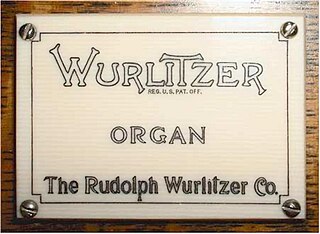
The Rudolph Wurlitzer Company, usually referred to as simply Wurlitzer, is an American company started in Cincinnati in 1853 by German immigrant (Franz) Rudolph Wurlitzer. The company initially imported stringed, woodwind and brass instruments from Germany for resale in the United States. Wurlitzer enjoyed initial success, largely due to defense contracts to provide musical instruments to the U.S. military. In 1880, the company began manufacturing pianos and eventually relocated to North Tonawanda, New York. It quickly expanded to make band organs, orchestrions, player pianos and pipe or theatre organs popular in theatres during the days of silent movies.

Orchestrion is a generic name for a machine that plays music and is designed to sound like an orchestra or band. Orchestrions may be operated by means of a large pinned cylinder or by a music roll and less commonly book music. The sound is usually produced by pipes, though they will be voiced differently from those found in a pipe organ, as well as percussion instruments. Many orchestrions contain a piano as well. At the Musical Museum in Brentford, examples may be seen and heard of several of the instrument types described below.

M. Welte & Sons, Freiburg and New York was a manufacturer of orchestrions, organs and reproducing pianos, established in Vöhrenbach by Michael Welte (1807–1880) in 1832.

Allen Organ Company LLC builds church organs, home organs, and theatre organs. Its factory is located in Macungie, Pennsylvania. The Allen International Sales Headquarters also includes the Jerome Markowitz Memorial Center, a museum. It displays many instruments that represent technological milestones in the development of the pipeless, electronic organ.
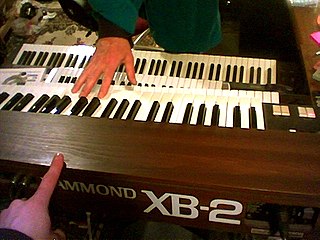
A clonewheel organ is an electronic musical instrument that emulates the sound of the electromechanical tonewheel-based organs formerly manufactured by Hammond from the 1930s to the 1970s. Clonewheel organs generate sounds using solid-state circuitry or computer chips, rather than with heavy mechanical tonewheels, making clonewheel organs much lighter-weight and smaller than vintage Hammonds, and easier to transport to live performances and recording sessions.

Hamer Guitars was an American electric guitar manufacturer founded in 1973, in Wilmette, Illinois, by vintage guitar shop owners Paul Hamer and Jol Dantzig. The company's early instruments featured guitar designs based on the Gibson Explorer and Gibson Flying V (Vector), before adding more traditional Gibson-inspired designs such as the Sunburst. Hamer Guitars is generally considered the first "boutique" vintage-style electric guitar brand that specifically catered to professional musicians, and was the first guitar manufacturer to produce a 12 string bass guitar.

The organ of the St. Jacobi Church in Hamburg, was built from 1689 to 1693 by the most renowned organ builder of his time, Arp Schnitger. The organ boasts four manuals and pedal with 60 stops, 15 of which are reeds – and has approximately 4000 sounding pipes. All in all, from the organ's original installation and its condition today not much of its conception has changed. The old pipework and the prospect pipes have been preserved in almost original format. It is the largest organ in existence from before 1700 and is one of the most eminent Baroque instruments that have been preserved.
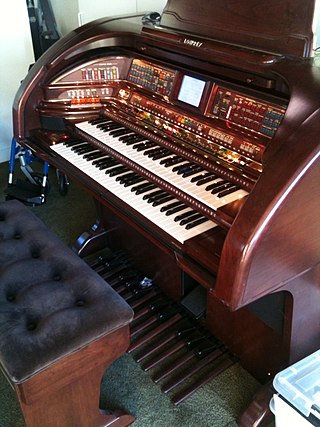
The Lowrey organ was an electronic organ named after its developer, Frederick C. Lowrey (1871–1955), a Chicago-based industrialist and entrepreneur. Lowrey's first commercially successful full-sized electronic organ, the Model S Spinet or Berkshire, came to market in 1955, the year of his death. Lowrey had earlier developed an attachment for a piano, adding electronic organ stops on 60 notes while keeping the piano functionality, called the Organo, first marketed in 1949 as a very successful competitor to the Hammond Solovox.
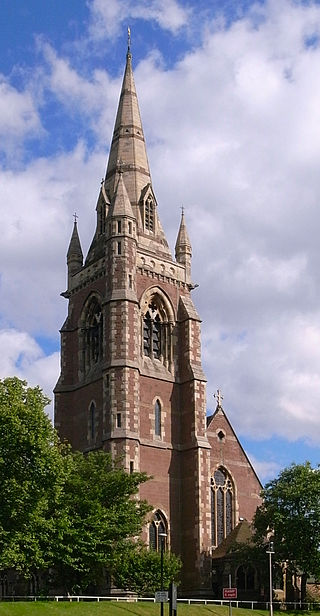
St. Anne's Church, Park Hill, Moseley is a parish church in the Church of England located in Moseley, Birmingham.
Central Music, Inc., founded in 1958 is a piano and organ dealer located in Clearwater, Florida. Central Music represents Rodgers Instruments, Fratelli Ruffatti, Blüthner, Hammond organ and Roland Corporation instruments. They serve Florida, Georgia and the Caribbean.

Galanti Electro Music was an accordion and guitar manufacturer from 1917 until the late 1970s.
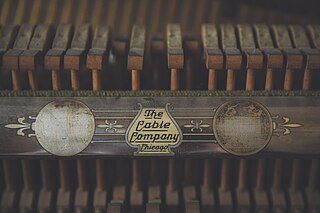
The Cable Company was an American manufacturer and distributor of pianos and reed organs that operated independently from 1880 to 1936.
Johannus Orgelbouw is a Dutch builder of electronic organs for home and church use, located in Ede, Netherlands. The organ manufacturer was founded in 1968 by Johannes (Hans) Versteegt (1928–2011), who had previously designed electronic organs for Eminent and Viscount. The Johannus prototypes were developed in the facility at Prins Hendriklaan in Ede.

J. C. Deagan, Inc. is a former musical instrument manufacturing company that developed and produced instruments from the late 19th- to mid-20th century. It was founded in 1880 by John Calhoun Deagan and initially manufactured glockenspiels. It was noted for its development of the xylophone, vibraharp, organ chimes, aluminum chimes, aluminum harp, Swiss handbells, the marimba, orchestra bells, and marimbaphone.















